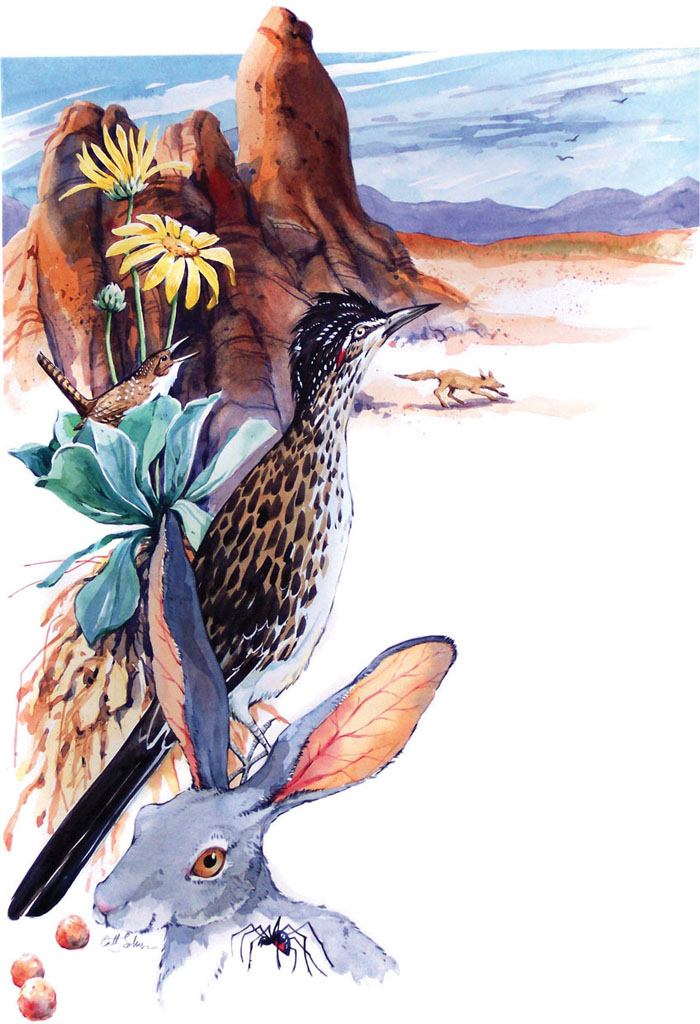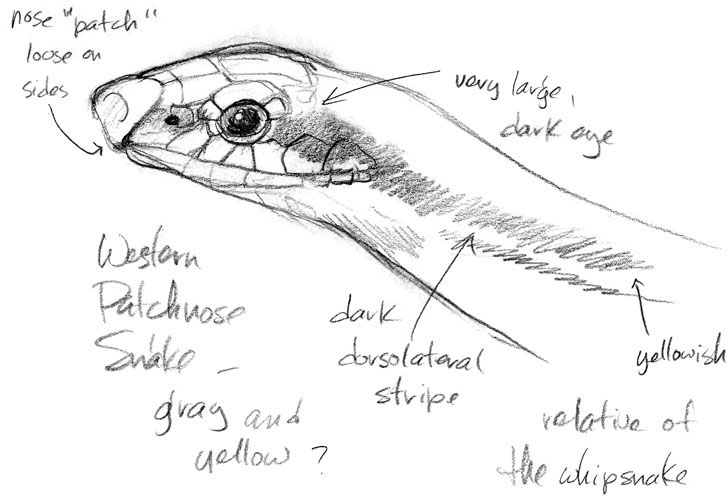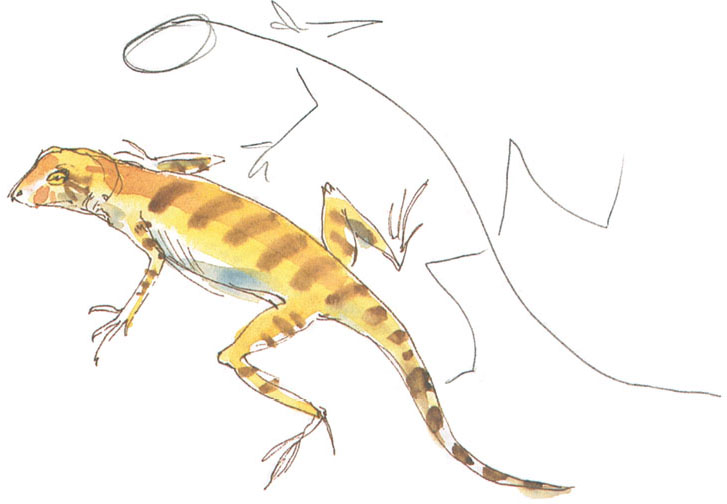
Depending on where you find yourself, you may see pronghorn antelope, jackrabbits, spotted skunks, coyotes, kit fox or ground squirrel. Ravens are among the most common birds, but roadrunners have earned a place in our folklore as well. You may be surprised to find a house finch or to hear the sweet, liquid song of a canyon wren.

This montage was originally an illustration I created for Country Living magazine. I like the contrast between the canyon wren and the roadrunner. These are common desert sights, from the red sandstone rock formations to the ubiquitous roadrunner. Jackrabbits, black widow spiders, coyotes and canyon wrens all populate the desert. The plant seen here is a sunray. These flowers grow on top of dead plant matter.

It’s hard to get close enough to birds to sketch them. But, as usual, food will work as bait. Every time I tried to get close enough to the ubiquitous desert ravens, they flew away with great indignant squawks. But, at a rest stop in the Mojave, they literally swarmed the big semis. The drivers must habitually share their food. We parked next to one of the semis so I could sketch, up close and personal.
Here, stick graphite, fine-tipped marker, indigo colored pencil and quick watercolor washes caught something of the ravens’ poses and personalities.

Like the Dall sheep in the previous chapter, the opportunity to draw an antelope this close presented itself at the Nevada Department of Fish and Wildlife. This is Strathmore watercolor paper with warm dark gray colored pencil and watercolor washes. Take any opportunity you can to draw these creatures at close range.

Sometimes it appears that reptiles are best adapted to desert life. All kinds of lizards and snakes make their way in the desert, from the little tan lizard I saw skitter under a rock, to sidewinders (also called horned rattlesnakes) and the docile, nonpoisonous patchnose snake seen in this graphite field sketch.
Reptiles can regulate their body temperature more easily than a mammal can. That’s why you see so many of them in desert climes.

To capture a zebra-tailed lizard on paper, you’d better be quick. This was done with an artist pen in brown, with very simple watercolor washes. A “stick figure” like the one at top may help you to capture the pose. Then flesh it out as you have time. A field guide may help with the markings.